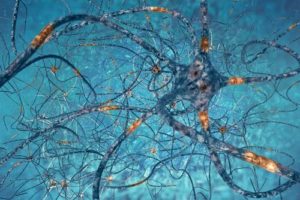 I could use some of that. We hear that all the time. Relief, relaxation and relishing your life can sound so far away … but it doesn’t have to be. As word gets out about IV ketamine treatment for depression and other psychiatric mood disorders, more and more studies are emerging.
I could use some of that. We hear that all the time. Relief, relaxation and relishing your life can sound so far away … but it doesn’t have to be. As word gets out about IV ketamine treatment for depression and other psychiatric mood disorders, more and more studies are emerging.
New information is surfacing about the effectiveness of this medication. And it’s inspiring more discussion, more research, and deeper understanding of the causes of depression.
And there’s more.
As evidence grows through research and clinical data, it seems clear that depression interferes with the neuroplasticity in the brain. Including diminished neurogenesis in the hippocampus and diminished synaptogenesis in the prefrontal cortex. In other words, depression messes with the growing neurons or brain cells and the synapses or connections that allow the neurons to communicate with each other.
A big factor in this is that stress reduces an important growth factor called BDNF, or Brain Derived Neurotrophic Factor. Sort of a “compost” for neurons. Without BDNF, your neurons become tattered and sparse.
They diminish in size and number … and thin out.
When you’re depressed, these measly neurons with their poor synaptic connections just have a much tougher time communicating with each other … so there is less creative thought, if any. Well-being tanks. And your world becomes darker, less hopeful, and without future. It’s a bad place to be in.
A brain that is well-connected is a brain that experiences creative thought and well-being. A brain in the dark is a depressed brain.
IV Ketamine + Neuroplasticity
Here’s where neuroplasticity comes in. (Don’t let the word shut you down.)
In this context, plasticity refers to the brain’s ability to change at any age … whether for better or for worse. So the term “neuroplasticity” refers to the ability of your neurons to adapt and remodel themselves. In the past 10 years or so, neuroscientists have come to understand that your brain is constantly remodeling itself throughout your life. And when it remodels itself, it remodels its networks, And because of that, it remodels how it works.
So, to put it briefly, when you think dark and despairing thoughts, or angry and vindictive thoughts, day after day after month after year, this thinking actually reshapes and remodels your brain. It’s kind of shocking, really.
The brain remodels itself. Your brain remodels itself.

Dark, negative and hopeless thoughts have a detrimental impact on your brain’s structure and on how it functions. Your brain changes to fit your thought processes … to respond to your stressors. By the same token, if you read inspiring and creative books, spend time with joyful people, and create joyful experiences, your brain can change over time for the better.
The very structure of your neurons can change — in a lush way. Richly. For the better. For your good.
Wow.
This is where people say, “I want some of that.”
Well, this is an oversimplification, of course. It doesn’t account for all of the different factors, illnesses, and environmental influences that shape the way your neurons look and act — grow and function — but it IS an illustration of one way the brain can change. At any rate, It appears that one reason IV ketamine treatment is so effective for so many different psychiatric symptoms is because of the way it enhances neuroplasticity in the brain.
Growing Your Brain Structure Garden
For example, when you take the time to learn a new language as an adult, you’re putting parts of your brain to work that respond by growing to accommodate.
A study of taxi drivers in London revealed that through the process of memorizing the streets of London to pass certification, that a specific structure in the brain enlarges to manage that information. The hippocampus is the memory center in the brain, and this study revealed that drivers who’d been driving taxis for decades had the largest hippocampi of the group.
Just an example to show how the brain changes with the right type of stimulation.
By the same token, the amygdala is the fear center in the brain, and it’s been studied extensively in childhood trauma, and in adult anxiety, depression, and bipolar disorder. The newest research shows that the size of the amygdala can change rapidly in response to recent stressors — even in people who’ve never had any of the these conditions. The left amygdala was smaller in people who’d had a recent stressor — it didn’t even have to be longstanding or chronic. And the shrinkage was enough to be seen on an MRI.

So here’s the point.
Ketamine’s Rapid Action
Ketamine acts rapidly in numerous ways, and its fast action is changing lives, as well as saving them. It stimulates changes in the brain that affect its structure and its function.
One example is that it quickly matures new neurons so they’re functionally mature and doing their job within 2 hours. Traditional antidepressants just can’t do this. As more neurons proliferate, mature, and migrate from the hippocampus into far-reaching brain regions, ketamine also stimulates the formation of more synapses, especially in the prefrontal cortex. The greater the communication throughout the brain, the better functioning the brain, and the greater the well-being of the individual. You.
The more synapses that are generated, the more neuroplasticity, or ability to change and grow, the brain will enjoy. And a growing, adapting brain provides a higher level of living and learning for you to experience. Plus a greater sense of joy and well-being.
Let the Sunshine In
It’s as if the proliferation of neurons – and the synaptic connections that empower them to communicate – opens doors and windows in the brain to let the light and fresh air in. This wonderful circulation of signaling gives the brain new thoughts, new hope, new relief.
Basically, IV ketamine + neuroplasticity = relief, relaxation, and relishing your life.
If you’d like to know more about innovative treatments for your psychiatric symptoms, please call for an appointment so we can evaluate what’s going on.
Innovative Psychiatry is committed to help you find and develop your best self. Let’s work together.
Joining forces with you to discover your best self,
Lori Calabrese, M.D.

Excellent blog!!! You did a wonderful job making a very technical process not only understandable, but relatable! Very interesting topic, look forward to learning more about it.
Thanks so much! I appreciate your positive feedback and I’m glad you enjoyed this blog post. I have a few others you might be interested in like Ketamine IV, IM, or IN for Depression: Which is Best? (Does It Matter?) and How Ketamine Turbo Boosts Your “Brain Compost” to Improve Your Mood.
Good overview. Speaking for myself, Ketamine treatment was/is the same as turning on the lights in a dark room. That’s my personal experience. I’m 69 and have never experienced such a profound and wonderful change in my life. Anxiety and alcoholism are no longer in my vocabulary. Its not a panacea, but it certainly has greatly enhanced my enjoyment in life.